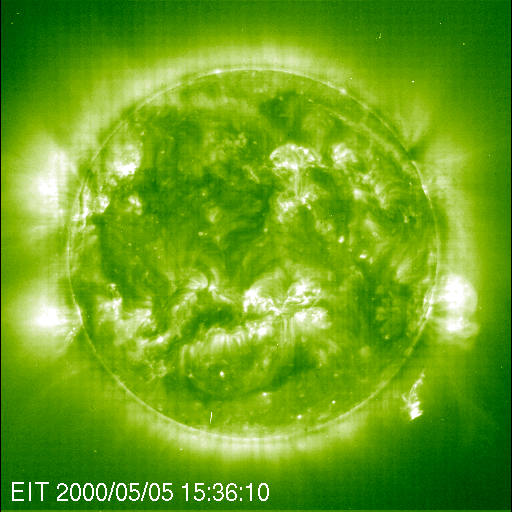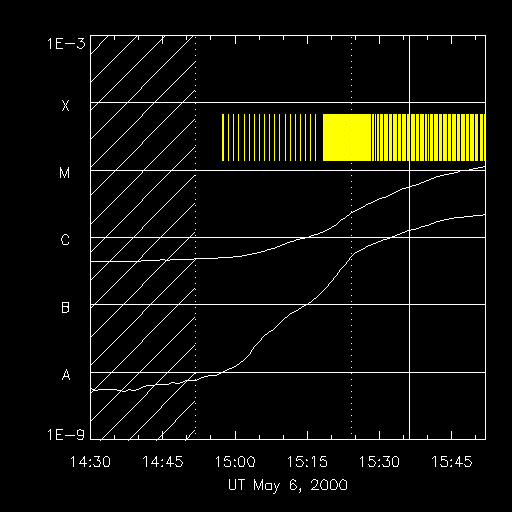
|

|

|
Of course the name of this nugget refers to the big fat long-duration flare event that occurred on May 5, but it offers us a chance to see what the Web offers for what turns out to be a major American holiday celebrating the Mexican military victory of the "Batalla de Puebla". Indeed the Sun produced a fireworks display this year on the battle's anniversary, and we think that this flare was huge (see here to see why we think so). From the history of solar activity this week, the flare we're going to discuss must have occurred far beyond the limb of the Sun, on the invisible hemisphere. So far around, in fact, that although the X-ray flux from this flare appeared medium-sized, in fact most of the event was occulted and it was a huge one. Although it was mostly concealed from us, its effects were spectacular - read on, dear reader (if any!).
Yohkoh data access was on holiday, because Cinco de Mayo coincides with the Japanese holidays of "Golden Week". In spite of this coincidence, though, perhaps these holidays are not particularly international! Accordingly, the first news we got about this flare was the reliable e-mail alert of a "halo CME" from SoHO/LASCO astronomer Simon Plunkett. We've often done science nuggets on these exciting and mysterious events, but perhaps N. V. Nitta's nugget "Filament eruption and halo CME on 9 June 1998" would be the most relevant here.
One astonishing thing about this event, as pointed out by Plunkett, was that an EIT global wave excited by the event propagated around onto the visible hemisphere. First, some background graphics:

|

|

|
Left, the wide-field coronagraph image from SOHO, showing a bright CME swirling off the SW limb (but very global) of the Sun; Center, an image from the FeXII channel of EIT, showing a complex structure above the SW limb that we can interpret as filament material heated to coronal temperatures; Right, a GOES soft X-ray light curve to put it in perspective. The yellow lines show SXT image times; the dotted and solid vertical lines the EIT image times. The filament (if that's the right interpretation) was not present in the earlier image.
Another remarkable thing about this event is the EIT wave, which appears to move right around the limb and to propagate across the visible hemisphere. This may be an overambitious interpretation, but in principle the corona should refract this kind of wave (fast-mode MHD waves, they say) so that it could bend around to follow the surface.
Yohkoh/SXT has a smaller field of view than EIT, and almost missed the filament eruption (if that's the correct interpretation) noted in the middle panel above. However the five-panel movie here

shows, just at the lower border, a rapidly moving source not far from the location of the EIT "filament". So it appears consistent with the idea that a filament, with complex structure, was heated as it rose far above the chromosphere (recall we are looking some 70,000 km above the photosphere thanks to projection above the limb). This helps us to understand the temperature of the "filament" structure - for SXT to see it, we need a temperature exceeding 2,000,000 K.
After the eruption to the S, a series of seemingly intertwined loops emerges from behind the limb, in a manner suggestive of a twisting motion. We speculate that this twisting motion could have been resolvable by an imaging XUV spectrograph, or even possibly with Yohkoh's own non-imaging Bragg Crystal Spectrometer.
May 12, 2000